

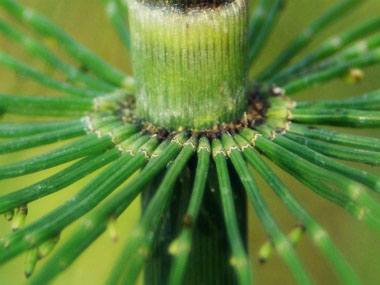

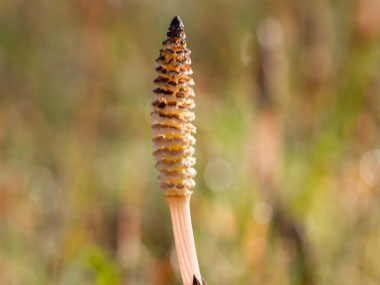
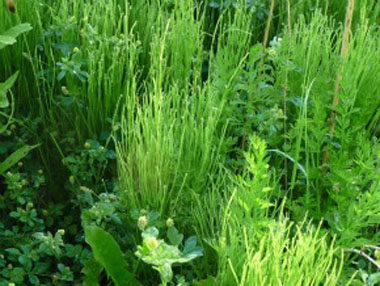

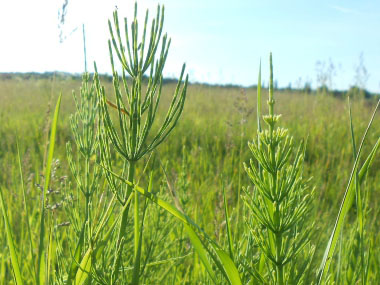
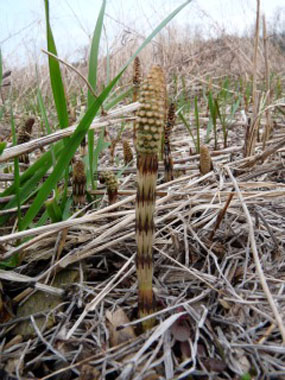
To support our efforts please browse our store (books with health benefits, etc.).
Horsetail has been used for centuries. Galen (Roman physician and philosopher approx. AD 129-199), used horsetail to aid arthritis, kidney and bladder problems as well as other ailments. This multi-purpose plant has numerous healing properties that include being an anti-hemorrhagic, antiseptic, antibiotic, an astringent, cardiac as well as a diuretic. Makes an excellent healing tea and cooked horsetail can be added to soups, stews or cooked in a stir-fry.
Distinguishing Features
In early spring it has a brown stem with spore-containing cones on the top. Once the cones have released their spores this weed gives way to a different appearance by turning green. Horsetails have jointed stems with a ring of long, slender, tube-like pointed leaves with branchlets at each joint.
Flowers
No flowers.
 Fields
of Nutrition has medicinal benefits and vitamin/mineral content of Horsetail.
Fields
of Nutrition has medicinal benefits and vitamin/mineral content of Horsetail.
Leaves
Long, slender, tube-like pointed leaves with branchlets at each joint.
Height
20 centimetres to 1 metre.
Habitat
Waste areas, open fields, ditches, roadsides, areas along railroads (including the gravel ballast), alluvial forests, marshes, thickets, tundra, degraded areas as well as higher quality areas where soil if sandy or gravelly. Prefers moist soil.
Edible Parts
Aerial (cooked or dried).
Similar Plants
Recipes
Winter Survival Food Handbook

PDF Plant Magazines
Types of Wild Food
Geographic Zones Seasons
Disclaimer
EdibleWildFood.com is informational in nature. While we strive to be 100% accurate, it is solely up to the reader to ensure proper plant identification. Some wild plants are poisonous or can have serious adverse health effects.
We are not health professionals, medical doctors, nor are we nutritionists. It is up to the reader to verify nutritional information and health benefits with qualified professionals for all edible plants listed in this web site. Please click here for more information.
Why Edible Wild Food?
- Food costs are rising
- Free, wild food is readily abundant
- Wild food adds nutrition to your diet
- Wild food can help treat various medical conditions





